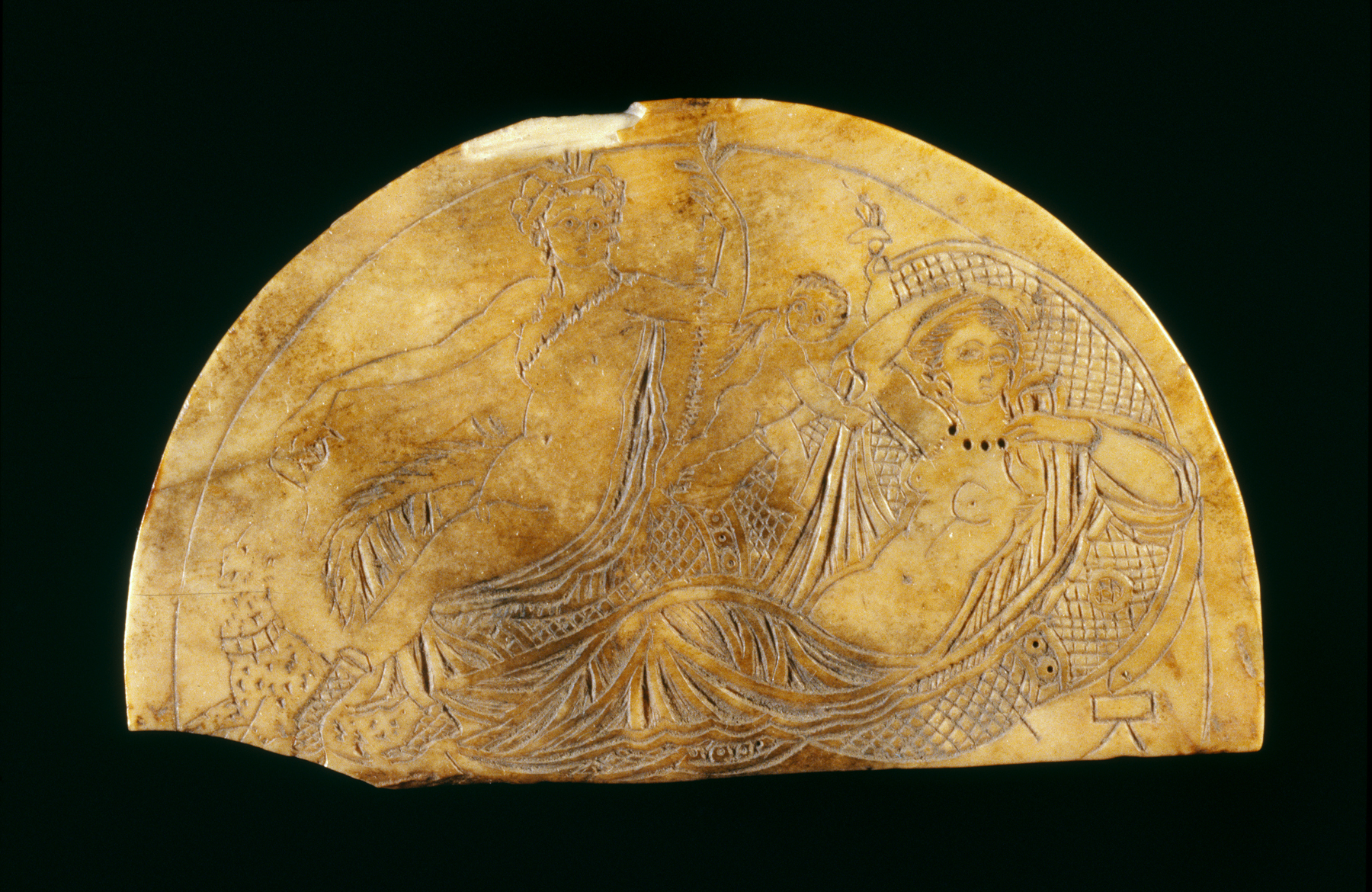Plaque with Dionysos, Ariadne, and Eros
Illustrated here is the mythological story of Dionysos, the Greek god of wine, discovering the sleeping nymph, Ariadne, with Eros (Cupid) alluding to their future roles as lovers. In Egypt, Dionysos was also considering a god of immortality, as suggested by his awakening or "bringing to life" of Ariadne. The Cupid alludes to the romantic subject matter as Dionysus and Ariadne became lovers after her abandonnement by Theseus on the Mediterranean island of Naxos. This half-moon plaque may have been used on a jewelry box or as furniture decoration for a wooden couch or bench.
Provenance
Provenance (from the French provenir, 'to come from/forth') is the chronology of the ownership, custody, or location of a historical object. Learn more about provenance at the Walters.
Dikran Kelekian, Constantinople, Paris, and New York, by purchase; Charles D. Kelekian, 1951, by inheritance; Walters Art Museum, 1951, by purchase.
Exhibitions
| 1989 | Beyond the Pharaohs: Egypt and the Copts in the Second to Seventh Centuries A.D.. Museum of Art, Rhode Island School of Design, Providence; The Walters Art Gallery, Baltimore. |
Conservation
| Date | Description | Narrative |
|---|---|---|
| 8/5/1982 | Treatment | cleaned |
Geographies
Egypt (Place of Origin)
Measurements
2 3/16 x 3 11/16 x 1/8 in. (5.5 x 9.3 x 0.3 cm)
Credit Line
Museum purchase, 1951
Location in Museum
Accession Number
In libraries, galleries, museums, and archives, an accession number is a unique identifier assigned to each object in the collection.
In libraries, galleries, museums, and archives, an accession number is a unique identifier assigned to each object in the collection.
71.1127


